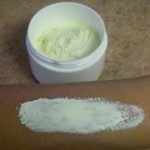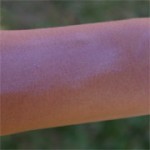Short answer is no. But if you are going to use nano-sized/micronized/ultrafine zinc oxide commercial sunscreens, use the lotion or cream and not the spray kind. When nano-sized zinc oxide particles were first introduced in sunscreen, there were some concerns that these ultrafine particles would absorb into the skin causing more harm than good. These claims have since been alleviated and studies have proven that these nano-scale particles will not pass through the skin. However, there are still unresolved concerns over the risk of inhaling nano-sized zinc oxide and titanium dioxide. That is why the Environmental Working Group “discourage[s] the use of powder or spray sunscreen, particularly those with titanium and zinc.”
Other than its extremely small particle size, there’s nothing special about micronized zinc oxide with regards to its UV blocking effectiveness. It is not even necessary. Its demand sprung out of purely aesthetic reasons. Conventional sized zinc oxide sunscreens have a thick, white, opaque appearance but micronized zinc oxide makes the sunscreen more transparent and therefore, more desirable especially compared to its translucent chemical-based counterparts. Some patents and experts involved in its nanotechnology would argue that ultrafine zinc oxide gives better UV protection. But not even Applied Therapeutics, the maker of SunSmart sunscreens, would claim on their website that their sunscreen which incorporates Z-Cote micronized zinc oxide is more effective than conventional zinc oxide. Only that it’s effective. An excerpt from their Skin Care Information web page reads:
“…Most people associate zinc oxide with the white thick paste lifeguards used to use. It was known to be the best sunblock available but it was cosmetically unacceptable and therefore used only by lifeguards or skin cancer patients. Fortunately, things have changed and you can now get physical sunscreens that are transparent. Zinc oxide, for example, is now manufactured so that the particles are small enough that you can not see them… One example is Z-COTE® (microfine zinc oxide). Sunscreen manufacturers now use Z-COTE® and other microfine powders as ingredients in their sunscreens. Zinc oxide is the primary active ingredient in many baby care products and thus has a very long history of safe use and is not associated with any allergic reactions. Because of this, physical sunscreens, like zinc oxide, are ideal for beach products and for products such as moisturizers and make up that are used every day and need to be as gentle as possible. “
My conclusion? Make your own zinc oxide sunscreen. It is way cheaper and just as effective. If you don’t like the opaque white look, apply a thin layer and apply more often. I purchase the zinc oxide in all my sunscreen and diaper rash formulation online through Liberty Natural. I’m not affiliated with them in any way. After a long and exhaustive search, it’s the only place I can find where I can get a small amount for personal use. I have talked to and confirmed with Liberty Natural that the zinc oxide they distribute is the conventional kind, 0.21 um (210 nanometers) average size. Based on its MSDS and general safety information on zinc oxide, you can safely use it the way I do. After all, zinc oxide has a long history of usage in medical treatments and cosmetics. When mixing, do it away from the stove and don’t do it in windy conditions or inhale it ;). Basically, use common sense. I’m not even sure where one would get micronized zinc oxide so if any of you know, kindly post it here.



20 Comments